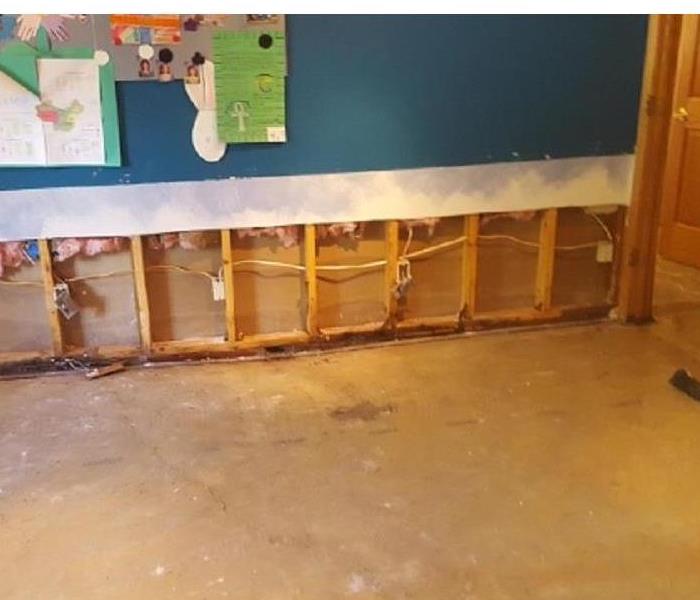How Water Classes Affect Drywall
2/19/2018 (Permalink)
How Water Damage Categories Affect Drywall
I previously explained the definition of Cat 1, 2 & 3. Please read the Blog titled Water Damage Categories first.
Specific building materials are affected differently by Category 1, 2 or 3 water. The category of water can make the difference between drying and restoring carpet and pad or having to dispose of it as I discussed in the Blog: How Water Categories Affect Carpet and Pad.
What about the walls? Depending on wall material, the method of water damage remediation will also vary on the Category of Water.
Drywall – Gypsum Board, commonly referred to a drywall has a tendency to soak up water like a sponge, especially from its cut ends. Water that is sprayed on the wall surface is often repelled by a painted surface or simply runs off before it can be absorbed. On the other hand, horizontal water that raises to a level above the bottom edge of the drywall will be absorbed, as much as several inches, up the wall board, depending on how long the water remains at that level.
If the water that rose to a level above the base of the wall board was Category 1 water, an attempt can be made to dry the wall. Air movement is the key to accomplishing this. First any floor trim or base, will need to be removed. Standard procedure dictates punching or drilling holes around 2 inches above the floor. This will be above the sill plate (the framing board that rests on the floor) but still below the upper level of where the base covered. Air movers are then directed at the holes to provide air movement in the wall cavity to facilitate drying. This method is usually effective as long as there is no insulation in the wall cavity and the water has not had time to soak up into the wall board a significant distance.
If the water is Category 2 or 3 water or if the above method is ineffective, the affected drywall will need to be removed and disposed of, a process commonly referred to as Flood Cutting.
Flood cutting, is measuring a line 2’ ½” above the floor and cutting and removing the drywall below that line. This will open up the wall cavity, allowing wet insulation to be removed and the wall chamber to be decontaminated if Cat 2 or 3 water is to blame. It will also allow a much larger volume of air to flow into the cavity to facilitate drying. If the water was very deep or sat for a long time, the flood cut might have to be made at 4’ ½”.
The height of the flood cuts, are intended to make the re-installation of drywall much easier. In the event of a serious flood where the water was very deep or it sat for an extended duration while wet, the walls may need to be removed completely.






 24/7 Emergency Service
24/7 Emergency Service